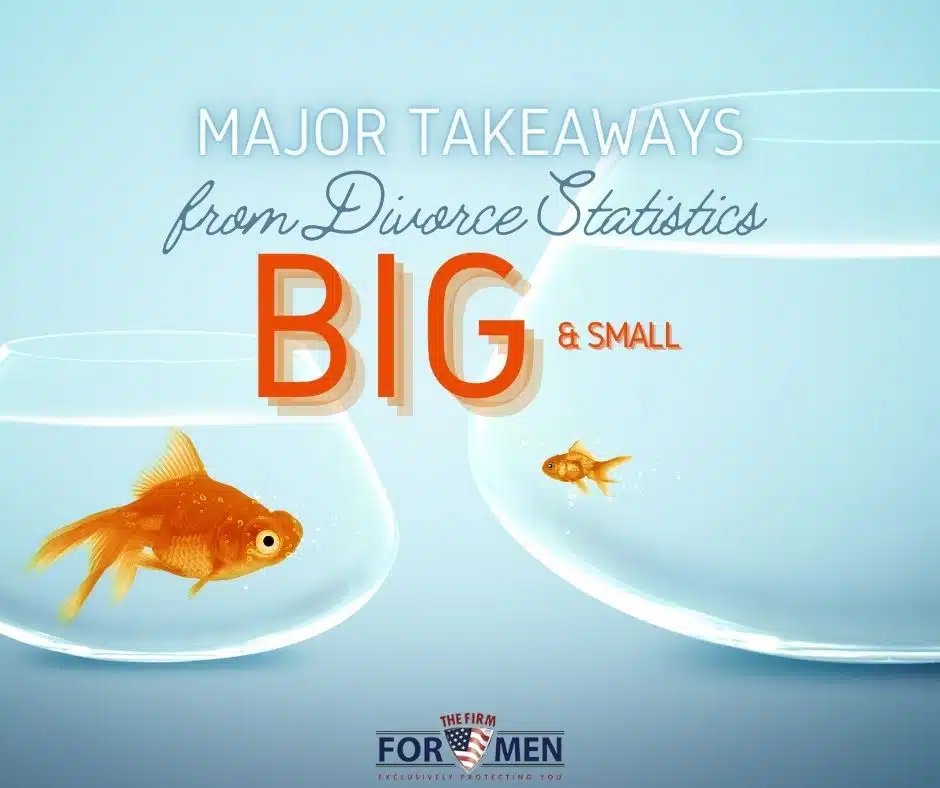Divorce is not possible in Vatican City. Home to only around 800 citizens, the Holy See has no laws permitting divorce. That odd fact is overwhelmed by some fascinating statistics about divorce in Virginia and around the country.
Jump to a Section
- Divorce Statistics 2016-2021
- Divorce Rate In America
- Remarriage After Divorce
- Top Reasons for Divorce
- Virginia Divorce Rate
- Careers with the Highest Divorce Rate
- Divorce Rates vs. Income
Divorce Statistics 2016-2021
Divorce statistics come from many sources, but no source can churn out real-time numbers. For example, the U.S. Census Bureau released a 2021 report analyzing 2016 data. All the statistics you will read in this article are from previous years, from 2016 to 2021.
Your 2024 divorce could be at any stage:
- Beginning discussions with your spouse about separating
- Enduring the separation waiting period (six months with no children, 12 months when you have children)
- Beginning divorce proceedings
- Awaiting a judge’s final divorce decree
- Getting on with your life post divorce
Your family law attorney can be available at each of those stages, so your lawyer’s telephone number may be the most important set of digits you keep in mind this year.
Divorce Rate In America
You already know the simplified number-crunching about divorce: the United States supposedly has a really high divorce rate. You can look for that bleakness, but remember:
- In 2021, when more than 2 million women married (more than 5,400 marriages a day) for a marriage rate of 9 per 1,000, only about 690,000 divorces, or 6.9 per 1,000, took place
- Marriage and divorce rates fell from 2011 to 2021
- Virginia’s divorce rate in 2021 was 6.5 per 1,000, below the national average
- Most divorces occur before the marriage reaches its eighth year, with roughly half of first marriages ending in divorce
- First marriages end at a much lower rate — roughly 50 percent — than second and third marriages (67 percent for second marriages, 73 percent for third marriages)
- People 50 and older account for around 36 percent of all divorces; 15- to 24-year-olds divorced at a rate of 19.7 per 1,000, while 35- to 44-year-olds divorced at a rate of 18.1 per 1,000.
Remarriage After Divorce
While around 60 percent of divorcing couples give serious thought to reconciliation during the process, Psychology Today says only around 6 percent of divorced couples remarry each other. Among that tiny percentage, only about 30 percent of those marriages lead to a second divorce.
Part of the reason to not remarry could be recognition of the time and effort you put into divorce. Forbes claims the national median price for divorce is $7,000, but that dollar figure can vary widely.
Add child custody, tricky property settlement, or spousal support conflicts to the divorce process and your legal tab could run over $100,000.
You probably will not return to your former spouse, but Pew Research says 64 percent of previously married men and 52 percent of previously married women remarry. The institution may take a few hits, but it endures.
Top Reasons for Divorce
Why are people divorcing? The National Library of Medicine tells us the top 11 reasons:
- Lack of commitment — 75.0 percent
- Infidelity or extramarital affairs — 59.6 percent
- Too much conflict and arguing — 57.7 percent
- Getting married too young — 45.1 percent
- Financial problems — 36.7 percent
- Substance abuse — 34.6 percent
- Domestic violence — 23.5 percent
- Health problems — 18.2 percent
- Lack of support from family — 17.3 percent
- Religious differences — 13.3 percent
- Little or no premarital education — 13.3 percent
In Virginia adultery, #2 on the Hit List, is a fault ground for divorce, but is devilishly hard to prove in court. Many couples inadvertently pursue condonation, or the acceptance of an affair. Once you or your spouse accept infidelity, you cannot use it as a reason to divorce.
Virginia Divorce Rate
Number 11 on that list is very interesting, especially in a societal environment that seeks to limit rather than expand the emotional and sexual education of young adults. When you also consider that some 48.1% of participants and 72.2% of couples say they did not know enough about the realities or stages of marriage, the Commonwealth and other states are doing a poor job preparing people for marriage.
Virginia does better than many states in one aspect of divorce: the Commonwealth’s divorce rate of 6.5 per 1,000 marriages is under the national average. You could move to Massachusetts and find a lower average (1.0 per 1,000) but stay out of Nevada (4.2 per 1,000).
Careers with the Highest Divorce Rate
Divorced people have jobs, too. Some jobs are stressful:
- The folks at FlowingData say gaming managers are particularly cursed by divorce: they have a rate of 52.9 percent
- Next are bartenders (52.7 percent)
- Flight attendants (50.5 percent) win the Bronze medal in this unsettling competition
Want lower chances? Marry someone with a less glitzy profession:
- The third-lowest divorce rate is among medical scientists, at 19.6 percent
- Second-lowest divorces go to physical scientists with 18.9 percent
- Actuaries have the lowest divorce rate, at 17.0 percent
That makes sense since actuaries know exactly how to measure risk and gaming managers mainly look for cheats.
So, onto our next question … does money buy happiness?
Divorce Rates vs. Income
Surely money buys happiness, right? Maybe. Maybe. Yes, divorce rates decline as income rises, but only to a point:
- Household incomes from $0 to $200,000 see a drop in divorce rates from around 40 percent (at $0 income) to 30 percent (at $200,000)
- From around $200,000 to $400,000, rates hold steady
- Divorce rates drop from around 30 percent to 24 percent as income rises to $600,000
- From annual household incomes of $600,000 and up, divorce rates slowly rise
At The Firm For Men we move far beyond statistics. We pride ourselves on helping each Virginia man with his unique family law challenge. Let us serve you. Contact us today or call us at (757) 383-9184 to arrange an initial consultation. We know the numbers, but we also want to know how we can help you.

